

Engage prospects with a scan and streamline customer engagement with FREE QR code marketing tools by Sona – no strings attached!
Create a Free QR CodeFree consultation

No commitment

Engage prospects with a scan and streamline customer engagement with FREE QR code marketing tools by Sona – no strings attached!
Create a Free QR CodeFree consultation

No commitment
In today’s digitally driven world, QR codes have moved from novelty to necessity, forming a crucial bridge between physical engagement and online conversion. For sign and graphics shops, these codes unlock powerful new ways to connect every piece of print, display, and custom signage with actionable digital experiences, as shown by in-store QR ideas. Common industry frustrations, such as missing valuable leads from traditional printed materials or losing track of anonymous interest, have prompted a shift from static assets to smarter, measurable engagement.
Gone are the days when printed promotional materials were a one-way communication channel, impossible to track or personalize. Sign and graphics shops have long struggled with proving return on investment, as engagement data stops at the surface. Modern qr codes in marketing empower these businesses to transform analog assets into interactive gateways, enabling quick content refreshes, traceable results, and campaign optimization across channels.
This guide explores how to leverage QR codes for measurable business growth, higher conversion rates, and smart customer journeys that close persistent gaps in visibility and follow-up. Discover strategies, expert insights, and proven tactics designed specifically for sign and graphics shops ready to future-proof their marketing while surfacing solutions to challenges that have limited industry success in the past.
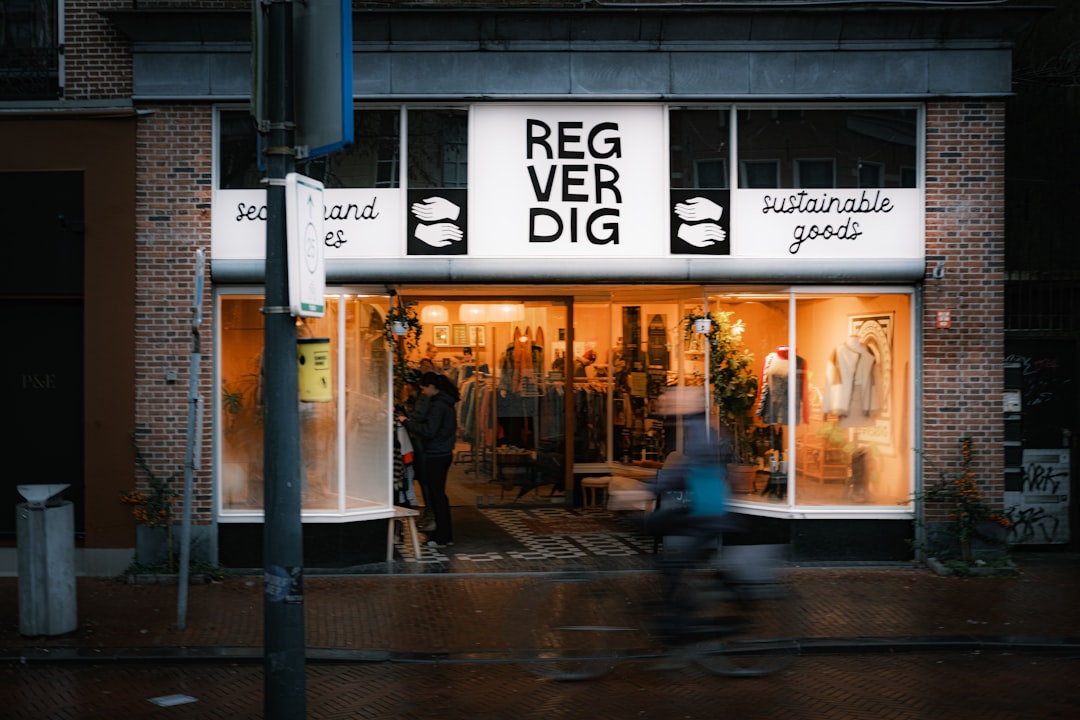
QR codes create an effortless connection between the physical world and your digital presence, letting you rapidly convert interest into action. Yet, many sign and graphics shops find themselves missing high-value prospects simply because interactions at displays or events are not captured in a CRM. Shoppers scan, browse, and decide on their terms, and without a direct digital pathway from signage to action, that interest often evaporates. QR codes remove friction at the point of inspiration and help you capture the moment.
The right approach modernizes outdated workflows and replaces static brochures, paper forms, and manual sign-up sheets with instant, trackable actions. Instead of hoping foot traffic takes a card or remembers a URL, QR codes make it easy to book a consultation, view a product gallery, or claim an offer on the spot. This shift not only improves customer experience, it also helps shops surface previously anonymous visitors and nurture real purchase intent through measurable pathways.
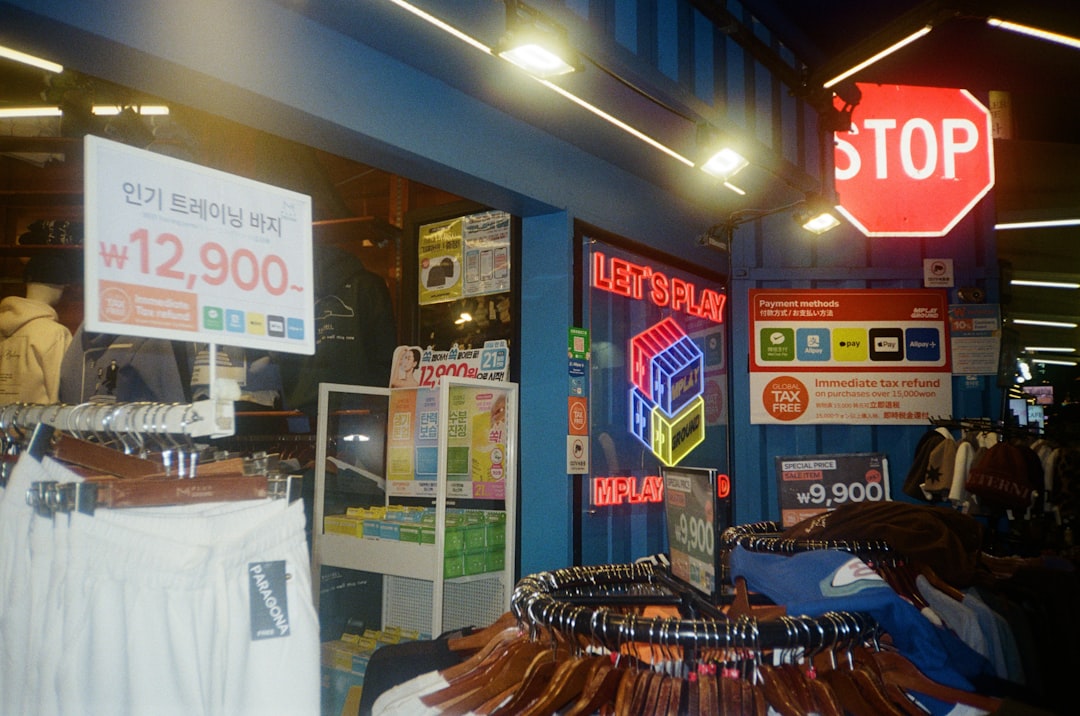
Sign and graphics shops face growing pressure to demonstrate ROI from print campaigns and to eliminate blind spots between offline engagement and digital conversions. A frequent challenge is the lack of visibility into who is interacting with signage. Prospective customers might admire a retail display, jot down a number from a vehicle wrap, or take a photo of a billboard, yet remain unknown if they never initiate direct contact. QR codes turn those moments into measurable interactions that move someone from interest to action. For measurement frameworks, see Sona’s blog post on offline attribution.
With QR codes, every banner, decal, or yard sign can trigger a next step. Scanners can schedule consultations, request quotes, download lookbooks, or subscribe for updates. This helps close visibility gaps, reduces friction for the buyer, and gives your team a clearer picture of which assets and environments drive the highest intent. The net effect is a more connected customer journey and a reliable way to attribute revenue back to your physical media.
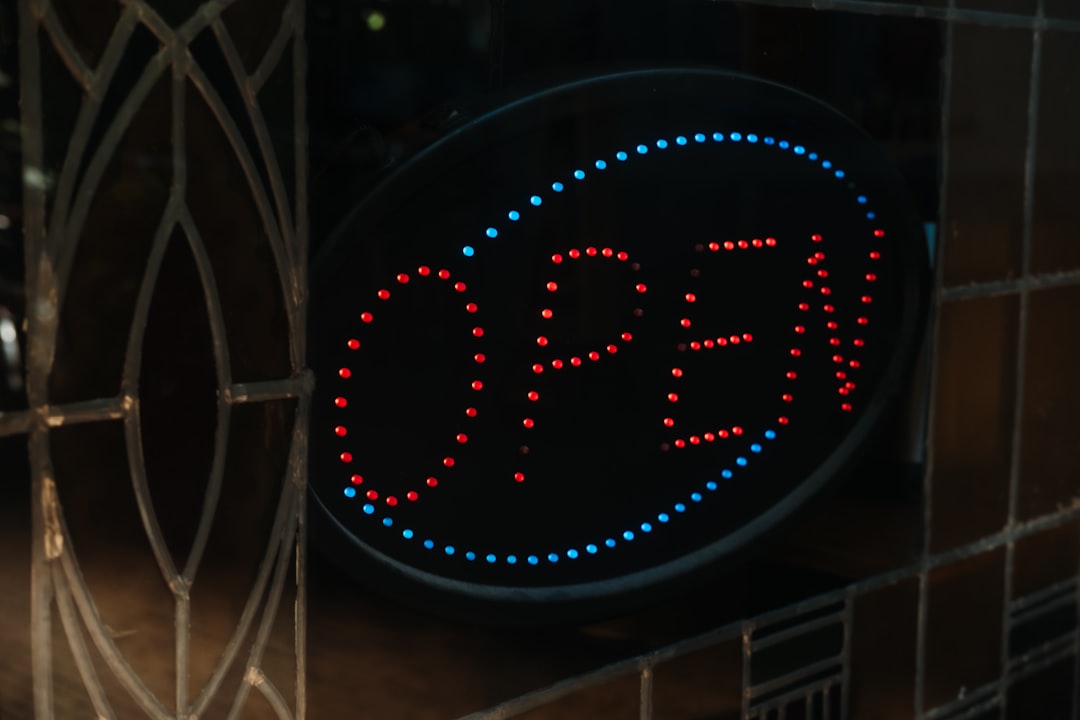
To overcome incomplete visitor data and broaden reach, sign and graphics shops deploy a mix of QR code formats matched to specific campaign objectives. Each format addresses different pain points, from untracked store visits to low form completion rates. Selecting the right type for each placement ensures your codes drive the intended action while capturing useful data.
Dynamic codes are often the best choice for commercial signage because they keep printed assets relevant over time. You can refresh a destination URL, change a discount, or route traffic to a campaign page without replacing the sign. For long-term placements like building wraps or fleet graphics, dynamic QR offers flexibility and durability, while static codes are better for permanent information that is unlikely to change.
Advanced platforms like Sona QR centralize code creation, design, and analytics across all formats. That means you can manage codes by project or client, track performance by channel, and integrate scan data with CRMs and ad platforms to identify and retarget high-fit buyers who would otherwise remain anonymous.
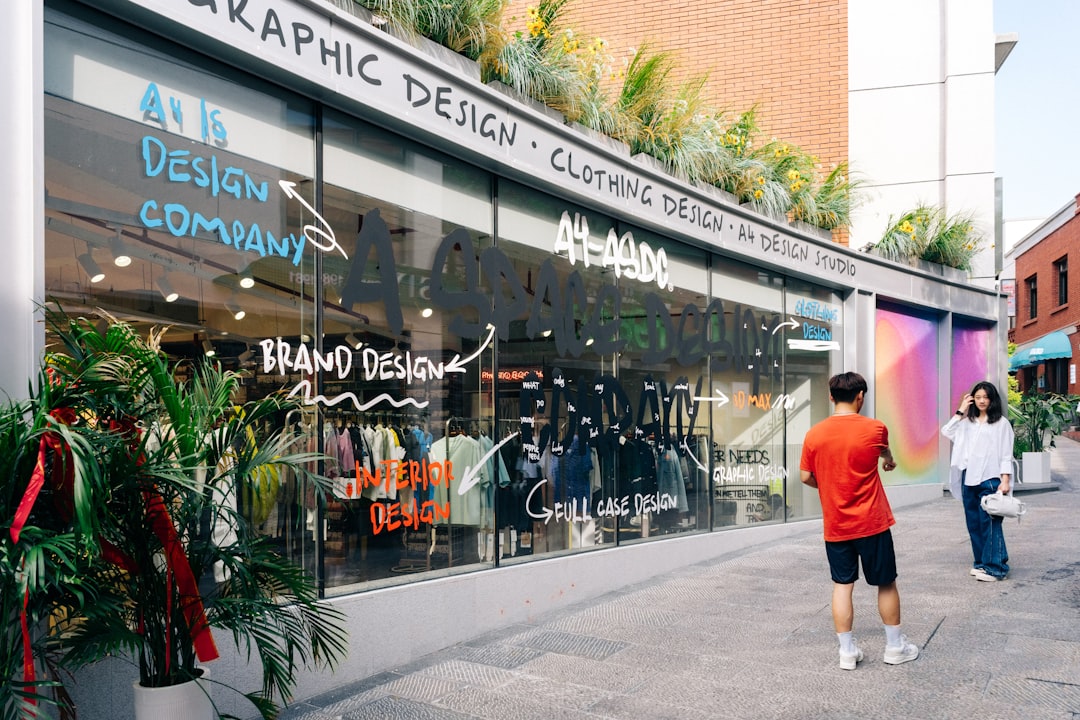
Inconsistencies between engagement and follow-up often leave sign and graphics shops struggling to nurture new leads or maximize repeat business. QR codes thrive where audiences already interact with visuals. By placing codes in these high-impact touchpoints, you turn passive impressions into trackable actions and reduce the risk of churn or missed upsell opportunities.
Consider the flow of your customers’ day. They pass storefronts, visit trade shows, unbox deliveries, and encounter vehicle graphics on the road. Each of those moments can be an entry point to a tailored digital journey. Prioritize placements where attention is high and a scan offers immediate value, and be intentional about the destination that follows.

QR codes shine when they make the next step obvious and valuable. The most effective use cases match a specific customer moment with a destination that answers a need. When every scan tells a story about what a prospect wants, you can guide them toward the right conversation or purchase.
These scenarios not only expand physical-to-digital engagement, they also recover otherwise lost interest by re-engaging anyone who interacts, even if they do not convert right away. Pairing each use case with a follow-up plan ensures your shop stays top of mind and nudges prospects toward action.
To enhance results, route each use case to the most relevant destination. For example, showroom signs might go to a project calculator or appointment scheduler, while event displays could point to a mobile form integrated with your CRM. Over time, this alignment increases scan rates and conversion quality.
One persistent challenge for sign and graphics shops is segmenting audiences when data is fragmented or missing. Modern QR campaigns turn every scan into an actionable signal that reveals who engaged, where it happened, and what they wanted. With that context, you can create audience segments that reflect real behavior, not assumptions.
Treat QR codes as smart entry points across your funnel. An awareness code on a billboard is different from a conversion code on a countertop sign. Each has a role in the journey and should be tagged accordingly. When you connect these dots in your analytics, your retargeting becomes more relevant and your outreach more timely. For tactics, see Sona’s playbook on intent-driven retargeting.
Traditional marketing channels often operate in silos. Print materials drive awareness, events generate leads, and digital ads nurture interest, yet the signals from offline engagement rarely feed back into your systems in real time. Print still drives engagement when paired with QR, as noted by print marketing with QR codes. QR codes unify these touchpoints by making each physical interaction measurable and instantly actionable.
When you add QR codes to your existing channels, you close attribution gaps and streamline the customer journey. Scans become signals that inform your media choices, creative, and follow-up. With a centralized platform like Sona QR, you can coordinate code management, monitor performance, and sync scan activity with your CRM and ad tools for complete loop closure.
A successful QR program starts with clarity. Define what you want each scan to accomplish, then match code type, design, placement, and follow-up to that goal. Use this checklist to set up campaigns that scale across your signage portfolio and deliver measurable outcomes.
Consistency is critical. Establish naming conventions for codes, apply UTM parameters to every destination, and standardize your CTAs so customers know what to expect when they scan. With Sona QR, you can manage these details from one dashboard and integrate performance data with your sales and marketing tools.
Identify the business outcome that matters for the placement. In a showroom, your goal might be appointment booking or product comparison. On a vehicle wrap, you might prioritize mobile-friendly quote requests. For a bridal expo, the use case could be RSVP for a post-event consultation with a special discount.
Translate each use case into a specific destination and workflow. If you want more quotes, drive traffic to a short, mobile-optimized form with autofill options. If your goal is education, link to a gallery or AR experience that demonstrates scale, materials, or color options. Aligning purpose and destination keeps your funnel clean and conversion focused.
Select static codes for fixed, evergreen destinations such as a company profile or a permanent installation guide. Choose dynamic codes when you need trackability, the ability to edit destinations, and campaign-level optimization without reprinting assets.
For most marketing and promotional signage, dynamic codes will provide the flexibility you need. If you plan to attribute revenue or run retargeting, a dynamic code paired with Sona QR is essential. Add UTM parameters to distinguish code placements and campaigns for clearer analytics. Start creating QR codes for free.
Integrate the code into the visual hierarchy of your layout, not as an afterthought. Leave margin space around the code to improve scannability, use high-contrast colors, and consider adding a logo inside the code module if it does not affect scanning reliability. Include a short, benefit-driven CTA near the code, such as Scan to See Sizes in Your Space or Scan for 10 Percent Off First Order. For inspiration, explore ideas for QR codes on signs.
Test across multiple devices and distances in realistic lighting conditions. Validate that the landing page loads fast on mobile, forms are short, and the content matches the promise in your CTA. If your code appears on a moving object like a vehicle, ensure the code size and contrast account for brief viewing windows.
Choose placements where your audience already engages. For sign and graphics shops, this includes storefront windows, showroom vignettes, packaging inserts, direct mailers, and conference signage. Tailor each deployment to the environment. A window wrap might route to a booking page, while a countertop sign in a specialty retail partner could link to a product lookbook.
Maintain consistent branding and message but adapt the CTA to the context. For example, event displays can emphasize Scan to Enter and See Winners, while delivery packaging might focus on Scan for Installation Tips or Reorder Supplies. The clearer the motivation, the higher the scan rates.
Monitor scan volume, engagement by channel, and conversion behavior in a central dashboard. Look for patterns in time of day, device type, and location to guide creative and placement changes. Use A/B tests on landing pages and CTAs to lift conversion rates, and rotate offers or content when performance declines.
Sync scan data with your CRM and advertising platforms. Trigger sales alerts for high-intent actions like quote requests, enroll scanners into drip campaigns matched to their interest category, and build retargeting audiences for social or display ads. Continuous optimization ensures no engagement goes unnoticed and every campaign improves over time.
For years, custom signage and promotional materials suffered from shallow measurement. Engagement ended at the physical asset, leaving no way to personalize outreach or attribute revenue to the true source. QR codes change that equation by capturing real-world intent and routing it into systems where it can be analyzed, scored, and acted upon.
Sona QR and Sona.com work together to complete this loop. Sona QR collects scan data and unifies performance across campaigns, while Sona.com connects that engagement to downstream behavior, including website visits, ad clicks, email activity, and CRM outcomes. The result is a full-funnel view that links scan to sale.
A great QR strategy combines smart placement, clear value, clean data, and fast follow-up. Aim for consistency in how you design codes, craft CTAs, and tag campaigns. Then empower your team to promote scanning with confidence and clarity at every interaction.
Shops that excel treat QR as part of a connected journey. They plan the scan, the destination, and the follow-up all at once. This mindset is what turns a code from a novelty into a reliable revenue driver.
Creative deployment examples for this industry include linking invoices to a QR code that opens a one-click payment page, or printing QR codes on loyalty cards for recurring customers who frequently reorder decals and promotional signage. These small conveniences compound into stronger relationships and higher lifetime value.
Not all QR platforms are built for the realities of sign and graphics work. Shops require high-volume code generation, flexible design options, and deep analytics that integrate with sales workflows. A suitable platform should reduce the manual burden on your team and minimize the risk of missed follow-up by automating data capture and routing.
When evaluating providers, look for dynamic code support, campaign-level management, and robust integrations. A platform like Sona QR centralizes code creation, design customization, and analytics in one place. That means you can manage dozens or hundreds of codes per campaign, update destinations in real time, and sync performance data automatically with your CRM and ad tools.
Success stories in the field include local graphics companies that replaced static flyers with interactive QR signage, which substantially increased lead capture at community events. Multi-location shops have put dynamic codes on vehicle wraps and seasonal window displays, enabling fast offer changes without reprinting, while powering retargeting based on geographic scans. Integrating scan data with ad platforms has opened precise remarketing strategies that traditional analytics could not support, reducing missed upsell windows and helping teams prioritize high-intent accounts.
As QR code marketing grows, so do expectations around transparency and data protection. Shops must be clear about what a scan delivers and how data is used. Doing this well builds trust and increases conversion; neglecting it risks confusion and attrition.
Follow local regulations and industry standards. If you capture personal information or plan to enrich CRM profiles based on scan behavior, make sure consent and privacy notices are easy to find and understand. On the design side, prioritize accessibility and scannability to avoid frustrating users.
For optimal usability and design:
Industry experts widely agree that QR codes are the missing link between offline visuals and digital funnels. Shops that adopt a data-driven approach to code deployment see improved engagement, clearer attribution, and a better understanding of which assets move prospects toward a sale. As tools evolve, QR codes are becoming more than traffic drivers; they are the backbone of a connected customer journey.
Emerging capabilities include context-aware routing, where a single code can deliver different content based on time, location, or repeat scans. Deeper integrations with CRMs and ad platforms allow for richer audience building and fine-tuned retargeting that aligns with actual interests, such as event signage versus retail displays. These developments promise more personalized experiences and more efficient media spend.
QR codes represent a turning point in how sign and graphics shops capture, nurture, and grow their customer bases, transforming every printed asset into a measurable digital gateway. This shift addresses long-standing challenges, from lost high-value prospects to lack of engagement visibility, by providing seamless physical-to-digital pathways that enable ongoing, relevant interactions.
With each scan, you gain not just an incremental data point, but the means to build richer segments, respond in real time, and uncover new conversion or upsell opportunities. As the industry continues to demand more accountability and concrete ROI, integrating QR codes throughout your custom signage and campaigns ensures every customer journey is trackable, optimizable, and increasingly valuable, proving that even the simplest scan can lead to lasting business growth.
QR codes have transformed sign and graphics shops from static displays into dynamic, measurable drivers of customer engagement and sales. Whether it’s attracting new clients, enhancing interactive experiences, or streamlining ordering processes, QR codes replace guesswork with real-time data, turning every printed piece into a powerful conversion tool. Imagine knowing exactly which signs or graphics spark interest and lead to orders—and being able to optimize your campaigns instantly.
With Sona QR, you can effortlessly create dynamic, trackable QR codes that update on the fly without costly reprints. Connect every scan directly to customer actions and revenue, gaining invaluable insights to boost your shop’s growth. Start for free with Sona QR today and transform your signage into an interactive, revenue-generating experience.
QR codes transform static printed materials into interactive, trackable assets that improve customer experience, capture previously anonymous leads, enable dynamic content updates, and provide measurable ROI through detailed engagement data.
To create effective QR code signs, choose use cases aligned with your business goals, select dynamic or static codes as appropriate, design codes with clear CTAs and good scannability, place them in high-traffic, visible locations, and track their performance to optimize results.
Creative uses include linking showroom displays to interactive galleries, enabling prize entries at trade shows, providing instant contact info via vCards, offering Wi-Fi access at events, directing to app downloads, and printing codes on packaging for product registration or reorder.
Choose a shop that offers centralized campaign management, supports dynamic QR codes with robust tracking and analytics, integrates with your CRM and ad platforms, provides design customization aligned with your branding, and has proven success in driving measurable engagement.
Available types include window graphics, vehicle wraps, yard signs, banners, retail and storefront displays, packaging inserts, direct mail flyers, trade show booth materials, and digital signage, all of which can be enhanced with QR codes for interactive engagement.
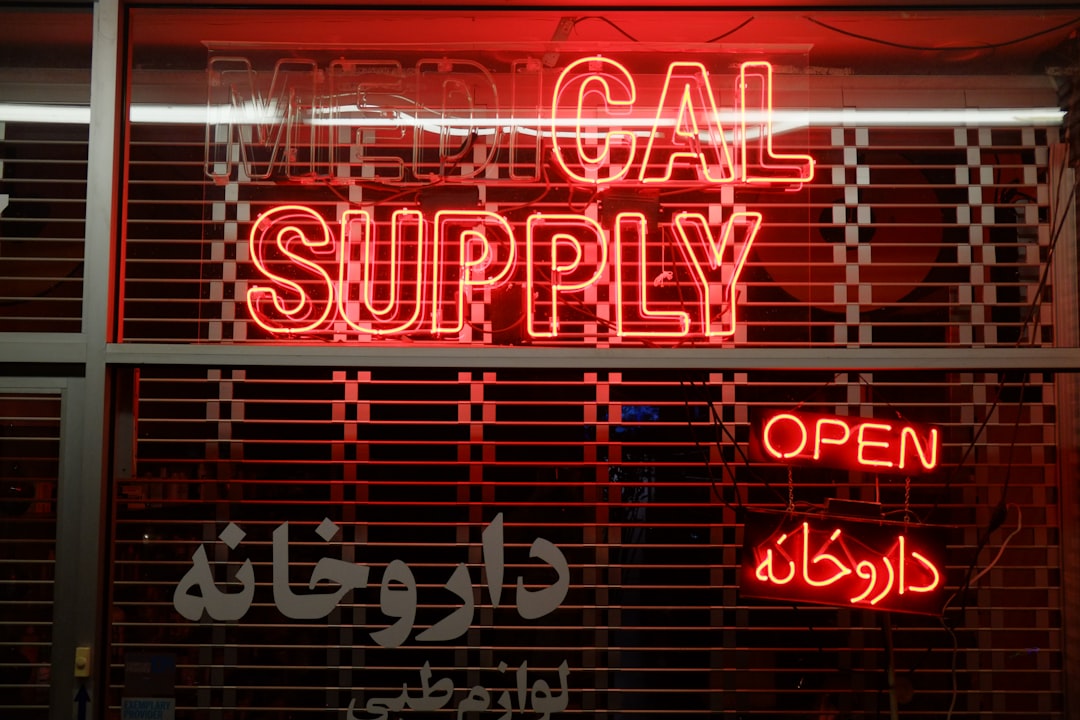
In today’s digitally driven world, QR codes have evolved from a novelty to a strategic powerhouse for bridging offline engagement with online action. For sign and graphics shops, QR codes represent a frictionless way to drive conversions and customer engagement, turning custom signage, promotional materials, and digital displays into interactive pathways that connect the physical world to measurable digital outcomes.
Many sign and graphics shops struggle to accurately attribute leads from in-store traffic, event displays, or printed promotions, resulting in missed high-value prospects who never make it into the CRM. QR codes solve this pain by enabling instant, trackable handoffs from offline engagement directly into digital funnels, eliminating the ambiguity that plagues traditional marketing methods.
Unlike static materials such as flyers or brochures, QR codes in marketing empower sign and graphics shops to create dynamic customer experiences. QR code scans provide a clear, actionable trail, offering increased visibility into which customers are influenced by storefront displays or event signage. From boosting store visits and enabling contactless transactions to capturing valuable leads, these small codes have a significant impact for any business focused on brand visibility and conversion.

Many shops miss out on high-value prospects due to incomplete data capture, especially when customers browse or express interest but leave before submitting a form or engaging with staff. QR codes bridge these gaps between physical touchpoints and digital outcomes, making it easier to attract, engage, and convert customers who would otherwise remain anonymous.
Transforming outdated workflows is central to this shift. Paper quote pads, generic brochures, and untracked coupons hide intent signals and create friction. With QR-powered journeys, every display becomes a gateway to a personalized landing page or form, every scan becomes a data point in your CRM, and every campaign becomes measurable.
Forward-thinking sign and graphics shops are shifting from static designs and manual data collection to seamless QR journeys. Technology has made it possible to modernize every stage, whether it is capturing walk-in leads from outdoor signs or re-engaging those who abandon before converting. Dedicated platforms such as Sona QR now automate and refine these experiences at scale, closing traditional gaps in visibility and follow-up.
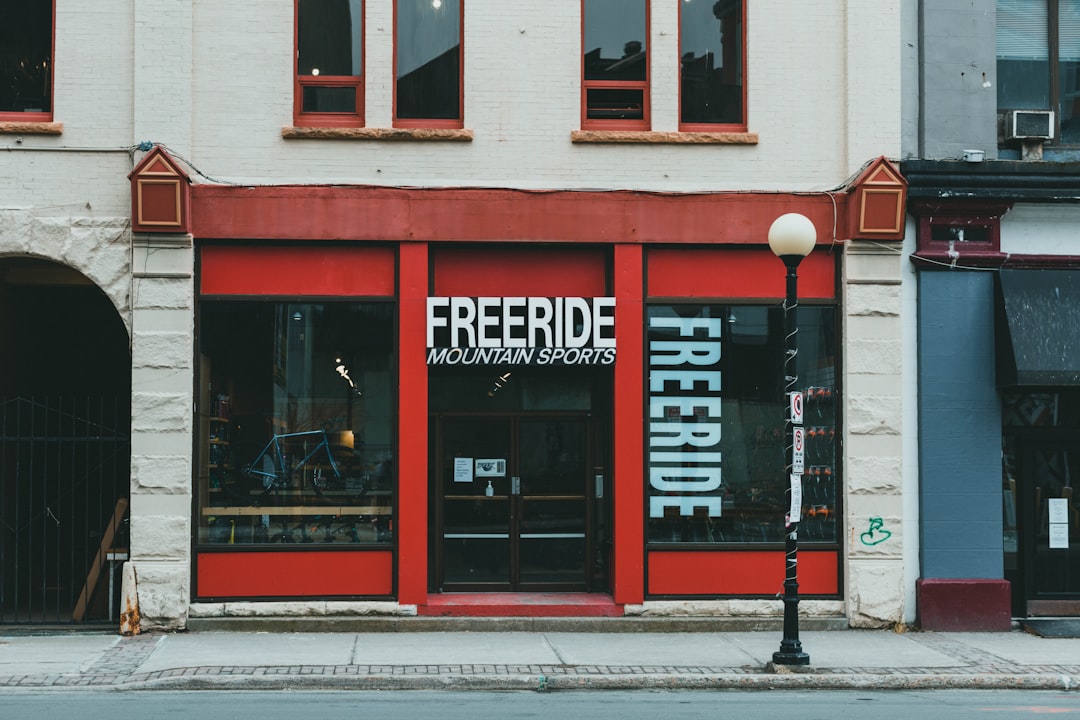
The transition from print to measurable marketing remains challenging. Too often, potential leads remain unknown and unpursued after seeing offline signage or in-store promos. QR codes provide a key advantage by giving sign and graphics shops visibility into previously anonymous customer interactions, turning fleeting interest into actionable data.
Sign and graphics businesses operate at the intersection of physical presence and digital demand generation. You already influence purchasing moments with storefront graphics, window clings, trade show booths, and fleet wraps. QR codes let you capture those moments precisely, connect them to digital destinations, and attribute them to revenue.
Successful sign and graphics shops place QR codes on appointment cards, window graphics, billboards, flyers, invoices, and installation checklists not only to drive action, but to capture the data necessary to segment and improve every campaign. The result is a more responsive, measurable marketing engine that supports sales, service, and repeat business.
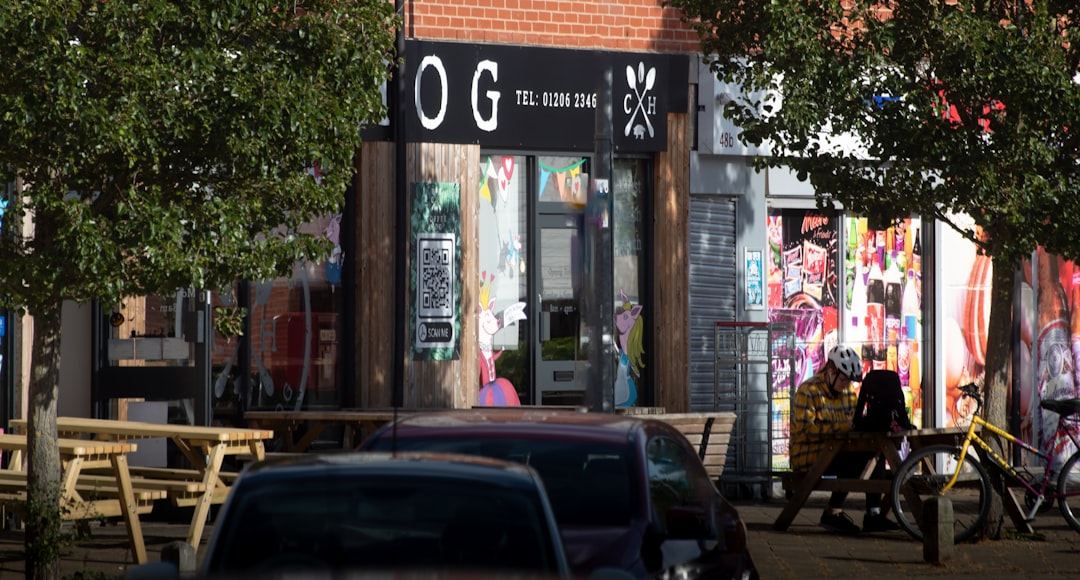
The diversity of QR code formats helps sign and graphics shops tackle a variety of challenges, whether capturing contact info from showroom visitors or enabling instant appointment scheduling. Selecting the right format ensures the scan leads to the intended action and that you gather the right data for follow-up.
While any QR can point to a web page, specialized formats remove additional steps. Pre-populated emails, SMS messages, and vCards reduce friction further, while Wi-Fi and app download codes elevate your in-store experience and ongoing engagement.
When deciding between static and dynamic codes, weigh flexibility and measurement needs. Static codes work for evergreen destinations such as your main catalog PDF, while dynamic codes are best for campaigns, time-bound offers, and any initiative that requires ongoing optimization and analytics. Sona QR supports both, giving you a single dashboard to manage formats, destinations, and performance.

Many sign and graphics shops are limited by a lack of insight into which physical assets or campaigns actually influence new business. Growth emerges when you place QR codes at high-traffic touchpoints that transform passive exposure into active, trackable prospects. Start where attention is highest, intent is strongest, and context is clearest.
Look closely at your core revenue drivers. If storefront walk-ins are valuable, prioritize windows and entry signage. If events and trade shows drive pipeline, build QR-first experiences at your booths and on your handouts. If repeat business and referrals matter most, use QR on invoices and packaging to keep customers engaged.
Prioritizing these placements allows shops to capture and nurture prospects who would otherwise remain invisible. Over time, your analytics will reveal which surfaces, messages, and environments deliver the highest scan-to-conversion rates, informing both creative and media decisions.
Addressing conversion friction is a persistent theme for shops trying to bridge physical and digital interactions. The most effective use cases reduce effort for the customer while increasing data quality for the business. Focus on repeatable workflows that map cleanly to your sales and service processes.
Consider how each use case ladders up to core business goals. If your priority is net-new pipeline, emphasize lead capture and appointment scheduling. For retention and expansion, promote care instructions, reorder flows, and review requests that sustain engagement after installation.
These applications grow qualified leads, foster loyalty, and enable closed-loop attribution. When paired with dynamic codes and proper tagging, each scan becomes a signal you can nurture toward conversion.
Many sign and graphics shops miss out on retargeting prospects because there is no mechanism to surface or segment visitors who show intent across various touchpoints. Every QR scan represents a data point. Strategically placing QR codes throughout the customer journey enables automatic audience creation that fuels precise follow-up in email, SMS, and paid media.
Think in terms of lifecycle stages. Awareness scans suggest curiosity, consideration scans indicate evaluation, and conversion scans reveal imminent purchase intent. By tagging codes with stage, location, and context, you create rich profiles that improve personalization and timing.
For sign and graphics shops, useful distinctions include small business owners versus franchise marketing managers, event planners versus trade show exhibitors, contractors versus facility managers, and new customers versus repeat buyers. With Sona QR, each code becomes a smart entry point that automatically labels scanners and streams that data to your systems for immediate action.
Traditional marketing silos often leave shops unable to connect offline engagement with digital activity, which increases the risk of missed upsell or retention opportunities. QR codes fill this gap by acting as connectors between channels, allowing you to surface crucial engagement signals wherever customers interact.
The goal is a cohesive experience. A customer who scans a window graphic, picks up a brochure, and visits your booth should receive consistent messaging and tailored follow-up. QR codes make this orchestration possible by giving you visibility into each touchpoint and a mechanism to trigger next steps.
QR codes serve as the offline onramp to your digital marketing engine. With Sona QR, you manage all codes in one place, monitor performance across channels, and sync scan data with your CRM and ad platforms. The payoff is consistent messaging, improved conversion rates, and clear attribution across the full campaign.
Consistency and clarity during execution determine whether your QR strategy hits its goals. Use the following framework to keep campaigns aligned, measurable, and easy to optimize over time.
Start with the outcome you need, then identify the physical placements that best support it. For example, if your goal is “book 40 consultations in March,” prioritize storefront windows, door decals, and event signage that will be seen by high-intent prospects. If your goal is “capture 100 trade show leads,” design your booth flow around a fast, scan-first check-in.
The format should match the action you want and the flexibility you need. Static codes are simple and permanent. Dynamic codes are editable, trackable, and ideal for campaigns you plan to iterate.
Scannability and clarity determine whether people take action. Visual hierarchy matters. Your QR should be easy to see, easy to scan, and supported by a strong call to action that tells people what they will get.
Roll out codes where they will have the most influence. Plan your mix based on audience behavior and the journey stage you want to target. For sign and graphics shops, this often includes retail entrances, on-counter displays, direct mailers, fleet vehicles, and event booths.
Measurement turns scans into business results. Track leading indicators such as scan volume and scan-to-visit rate, as well as lagging indicators like bookings and revenue. Use findings to adjust creative, placement, and offers in real time.
Current QR solutions provide workflow automation and intuitive reporting, so teams can focus on creative deployment rather than manual campaign management. This directly addresses pain points around lost leads, lagging follow-up, and unclear attribution.
A major challenge for sign and graphics shops is connecting offline activity to actual business results. Without the ability to trace engagement from scan to sale, valuable leads often remain hidden or neglected, and marketing spend remains hard to justify. Robust tracking closes this loop and reveals which assets and messages truly drive pipeline.
The fundamental questions are simple: who scanned, where did they scan, what did they do next, and did it contribute to revenue. Modern QR platforms answer these questions with granular analytics and seamless integrations that turn real-world engagement into actionable insights.
Benchmarks worth tracking in this vertical include scan-to-visit rate, scan-to-form completion rate, scan-to-appointment rate, and revenue per 100 scans by placement type. Over time, these metrics guide smarter creative choices and more efficient media allocation.
Sustained results come from consistent execution and continuous improvement. As you scale QR initiatives across more surfaces and campaigns, align your tactics to the media you use most and the outcomes you need most.
Equip your team to promote scanning and your systems to act on scan data instantly. The combination of informed customers and automated follow-up turns every code into a miniature sales assistant that works 24 hours a day.
For storefront ideas, see QR marketing ideas. Start creating QR codes for free. Create a few dynamic codes for your highest-traffic placements, and watch how quickly scan data starts informing smarter decisions.
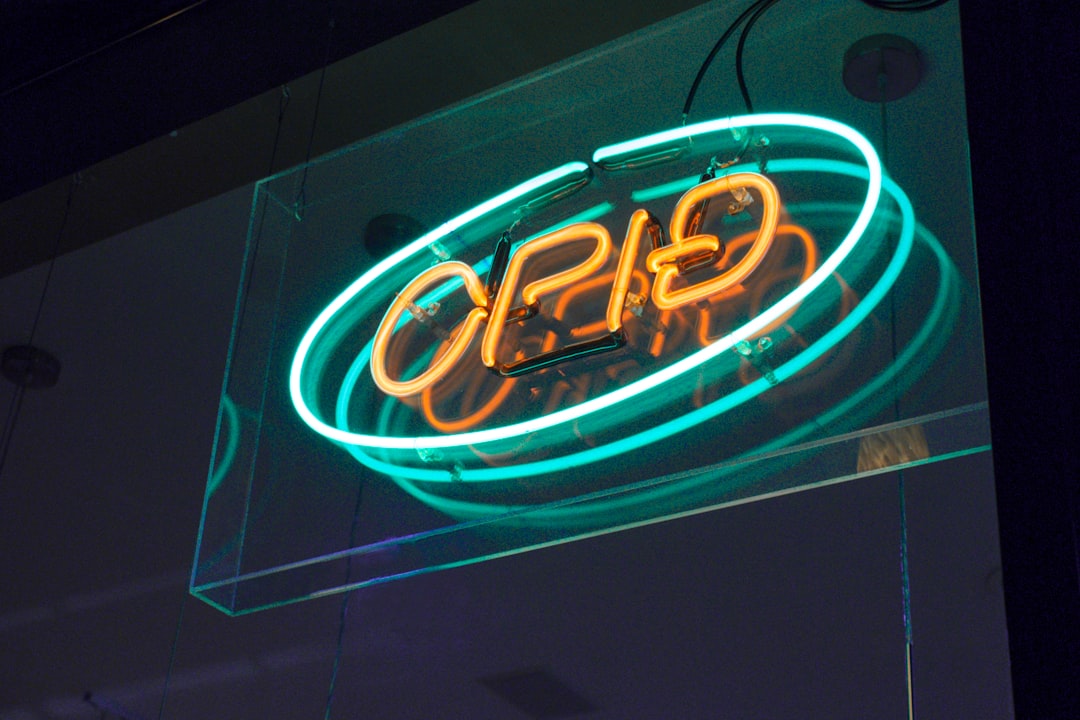
Seeing best practices in action helps teams overcome inertia or skepticism. QR codes can be aesthetically integrated into premium signage and packaging without distracting from your brand. The key is thoughtful placement, clear CTAs, and a destination experience that delivers immediate value.
Use these scenarios to spark ideas tailored to your audience, geography, and media mix. Small trials on a few placements will quickly reveal what resonates, then you can scale the winners to more assets and locations.
These examples show that QR integration extends beyond scan-to-web. When planned with attribution in mind, codes help shops unlock underutilized data, reach high-fit audiences, and personalize follow-up in ways that analog processes cannot match.
Industry experience has surfaced several pitfalls that can erode campaign effectiveness. The most common issues are unclear CTAs, poor scannability due to reflective or curved surfaces, and destinations that do not match the promise made on the sign. Avoiding these mistakes can double your scan-to-action rate.
Build a cadence for reviewing analytics and refreshing creative. Even high-performing codes can fatigue over time. Regular updates to offers, images, and landing pages keep audiences engaged and improve long-term ROI.
By actively managing these variables, sign and graphics shops can consistently surface actionable engagement signals, segment audiences with precision, and drive repeatable success with QR-powered campaigns.
QR codes represent more than a shortcut. They transform every asset a sign and graphics shop creates into a measurable, interactive gateway to deeper customer relationships and business growth. By embedding QR code journeys in custom signage, digital displays, and printed collateral, shops replace guesswork and lost leads with data-driven outcomes and richer engagement.
When equipped with advanced tracking, real-time analytics, and CRM integrations, QR codes empower shops to access, segment, and act upon high-value leads that previously slipped through the cracks. This closes the loop on revenue attribution, ensures consistent nurture, and enables targeted upsell and cross-sell efforts based on real engagement signals.
Adopting QR-powered workflows with platforms like Sona QR allows teams to automate campaign delivery, monitor performance continuously, and turn every physical and digital touchpoint into a catalyst for conversion. Start with a few high-traffic placements, track results carefully, and scale the winners. The path from scan to sale becomes clear, measurable, and repeatable.
QR codes have revolutionized sign and graphics shops by transforming traditional signage into interactive, measurable marketing tools that drive conversions. Whether it’s attracting new customers, enhancing the in-store experience, or providing actionable insights on which designs and placements perform best, QR codes unlock powerful opportunities to maximize every printed asset’s impact.
Imagine knowing exactly which signs lead to customer inquiries or purchases—and updating your campaigns instantly without the need to reprint. With Sona QR, you can create dynamic, trackable QR codes in seconds, connect every scan directly to revenue, and optimize your marketing efforts in real time. No guesswork, no wasted budget—just smarter, more effective campaigns tailored to your business goals.
Start for free with Sona QR today and turn every sign into a conversion-driving asset that grows your business.
QR codes enable seamless offline-to-online engagement, provide trackable data for lead capture, increase conversion rates, allow dynamic content updates, and improve attribution and follow-up in sign and graphics shops.
Design QR codes with high contrast and clear CTAs, test for scannability under real conditions, use dynamic codes for flexibility, place them in high-traffic areas, and link them to mobile-friendly, relevant landing pages or forms.
Creative uses include walk-in lead capture via storefront windows, linking to project inspiration galleries, event check-in and promotions, proof approvals, referral and review programs, and app downloads through vehicle wraps.
Choose a shop that offers expertise in integrating QR codes with dynamic, trackable campaigns, supports analytics and CRM integration, provides diverse sign types, and can customize placements to match your business goals and customer journey.
Available types include storefront window graphics, point-of-sale displays, trade show booth signage, vehicle wraps, flyers, catalogs, invoices, installation stickers, digital and static signage, and packaging labels.

QR codes have evolved from a novelty to a strategic powerhouse in bridging offline engagement with online action. For sign and graphics shops, persistent challenges such as losing high-value prospects who interact with signage but never complete a form or reach out, or being unable to identify anonymous visitors, often lead to missed opportunities. QR codes provide a frictionless and highly effective solution to these frustrations, ensuring every customer encounter becomes a measurable engagement and a potential lead.
By transforming printed signs, banners, and promotional materials into digital touchpoints, QR codes help sign and graphics professionals capture intent signals in real time, fill gaps left by outdated analog methods, and connect each physical impression to actionable digital insights. This ability to surface anonymous interest and seamlessly route people from physical spaces to online destinations is rapidly becoming vital for companies that want to avoid lost revenue and the manual workflows associated with traditional marketing.
This article explores how QR codes can be leveraged by sign and graphics shops to streamline processes, enhance customer experiences, and unlock new growth opportunities. Discover practical strategies and industry insights for integrating QR codes into your signage solutions and marketing mix, solving pain points such as untapped lead capture and incomplete data, all while driving tangible business results.
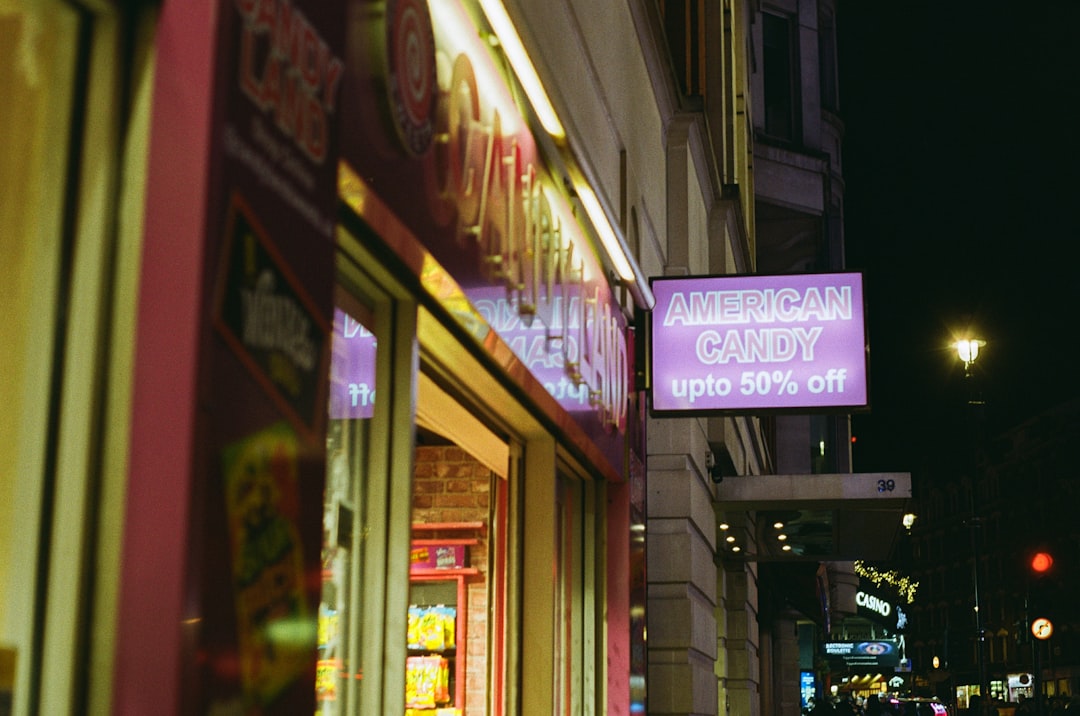
Sign and graphics shops succeed when casual attention turns into action. The challenge is that traditional materials like brochures, yard signs, window graphics, and vehicle wraps rarely give prospects an easy path to follow up. QR codes close that gap by making every surface a trigger for measurable engagement, from price quote requests to portfolio views and review submissions.
To raise conversion rates, focus on replacing friction with fast, mobile-first experiences. Eliminate the hurdles of typing long URLs, remembering phone numbers, or waiting to speak with staff during busy hours. QR codes give prospects immediate access to the next step and provide your team the data needed to follow up with precision.
With the right plan, QR codes turn static signage into a dynamic sales channel. They streamline workflows and provide a foundation for continuous optimization using real-world engagement data.
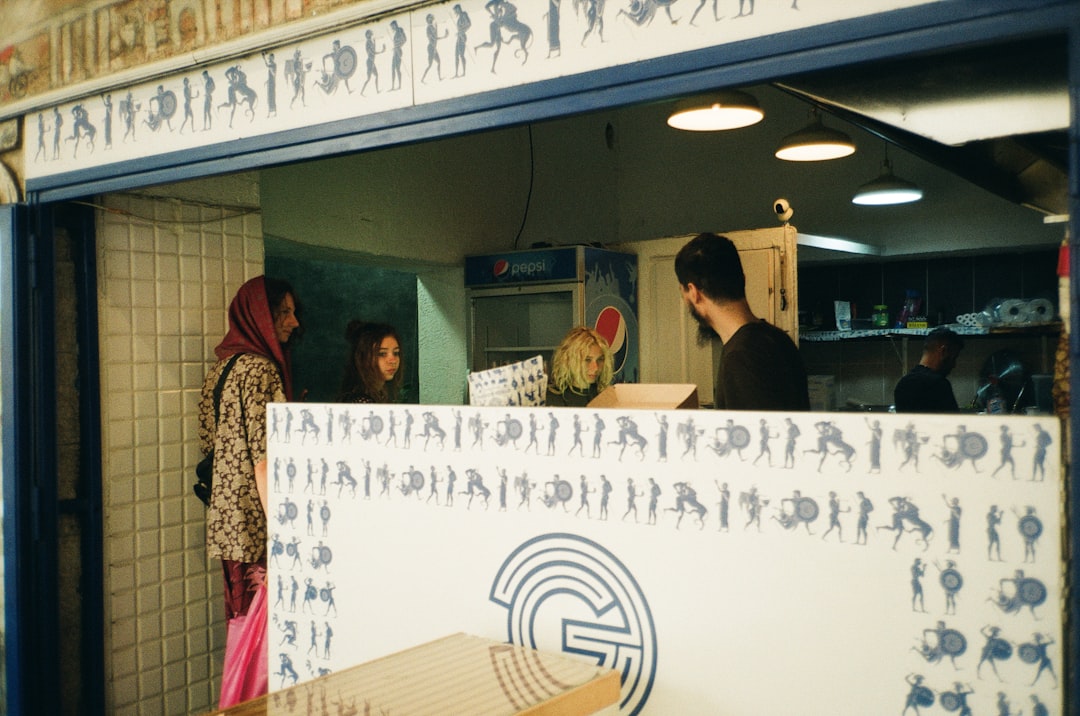
For many sign and graphics producers, the biggest leak in the funnel happens between attention and action. People see vehicle wraps on the road, pass by backlit displays at retail, or notice window graphics after hours, yet they do not reach out in the moment. QR code signs bridge this gap by linking every physical impression to a clear, mobile-optimized next step.
The value compounds when you consider how fast creative and offers change in this industry. Promotions, event dates, and product launches shift quickly. Dynamic QR codes allow you to update destinations without reprinting, which preserves budgets and supports agile marketing. The result is a measurable system where each scan can be attributed to a sign, a location, and a specific call to action.
When properly deployed, QR codes elevate signage from static awareness to active engagement. They also give sign and graphics shops the attribution needed to prove ROI to clients and justify creative recommendations.
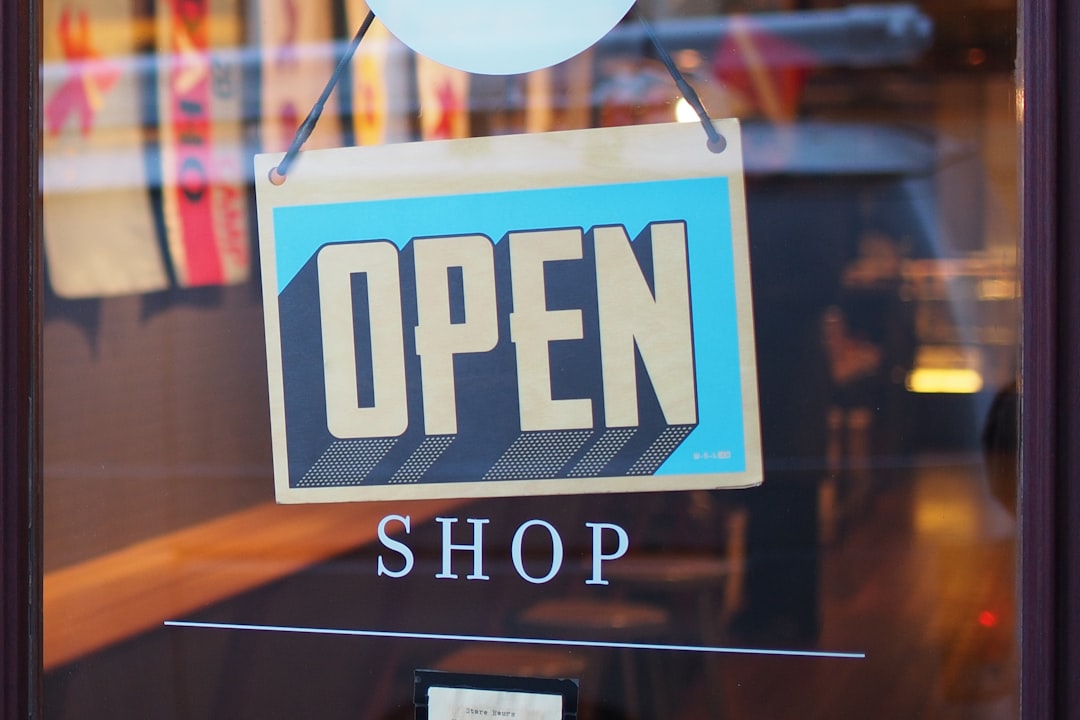
The right QR format depends on the action you want a prospect or customer to take. In sign and graphics, the most common needs include requesting a quote, reviewing a portfolio, contacting a designer, and accessing product specifications. Each of these is supported by tried-and-true QR formats.
Dynamic codes are particularly useful in this vertical because designs are often printed at scale and reused across campaigns. With a dynamic QR code managed in a platform such as Sona QR, you can redirect scans to updated pages and track performance without reprinting.
Static codes are suitable for evergreen destinations such as a permanent portfolio gallery, but dynamic codes are the better choice for any campaign that will evolve over time or requires granular analytics and retargeting.
Placement determines how often your codes get scanned and how many of those scans turn into revenue. Successful sign and graphics shops place QR codes in moments where curiosity naturally peaks and where the next step can be completed on a phone in seconds.
Think about flow and proximity. Put the code where the eye lands in a design, and make the action crystal clear. Add short, benefit-led copy so people know exactly why they should scan and what they will receive. For additional QR marketing ideas.
By placing codes where intent is highest and messaging is clear, you can transform each sign into a measurable conversion point and a source of actionable data.
Sign and graphics work is inherently visual, fast-moving, and deadline driven. QR codes fit that reality by converting momentary interest into a concrete next step while feeding your CRM with the context needed for effective follow-up. The most effective use cases align with your most common customer interactions.
Each of the examples below addresses a critical gap: capturing and nurturing demand that would otherwise go unmeasured. If you implement only two or three of these, you will see improved conversion rates and more efficient sales outreach.
These use cases convert everyday materials into measurable growth engines. They are easy to implement and scale when managed through a centralized platform.
Every QR scan is a signal. It tells you who, where, and when someone engaged as well as what they wanted to do. By deploying multiple codes across stages of the buyer journey, you can create automatic segments that map to awareness, consideration, and conversion.
This segmentation lets you tailor creative, offers, and follow-up timing. Someone who scanned a code on a showroom display wants different content than someone who scanned a code on an installation checklist. Use these distinctions to retarget more effectively across email, SMS, and paid media via Sona’s Playbook on intent-driven retargeting.
With these practices in place, your QR codes become more than links. They become intelligent entry points that feed a high-performance retargeting machine.
QR codes are the connective tissue across print, digital, and in-person channels. When you add them strategically, you gain real-time engagement and reliable attribution, which helps you optimize spend and creative choices across the board.
For sign and graphics shops, this integration also elevates your client value proposition. You can offer not only beautiful signs but also measurable campaigns with closed-loop reporting. That is a compelling advantage in competitive bids.
A centralized platform such as Sona QR lets you manage all of these codes from one dashboard, monitor performance, and sync data to your CRM and ad accounts. The result is a connected offline-to-online funnel with reliable metrics at each stage.
Executing a QR campaign well is about clarity, consistency, and measurement. Start with a specific outcome in mind, then choose the right code type, design for scannability, and set up analytics so you can learn and iterate. This checklist gives sign and graphics teams a reliable process to launch and scale.
Before you begin, decide how you will attribute success. If your goal is booked consultations, define what counts as a conversion and ensure your landing pages and CRM are set up to capture that signal. Then align copy, creative, and placement around that goal.
Focus on an outcome that aligns with your pipeline, such as increasing quote requests for vehicle wraps, collecting reviews after installations, or generating RSVPs for a showroom open house. The clearer the outcome, the easier it is to design an effective path to conversion.
Choose static or dynamic based on your need for flexibility and analytics. Static codes work for unchanging destinations, while dynamic codes provide editability, tracking, and the ability to run A/B tests.
Great content fails when codes are hard to scan or confusing to use. Invest time in placement, size, and contrast, and validate that the user experience is mobile friendly.
Roll out your codes where your audience already engages. Use unique codes for each asset and placement so you can track performance and optimize.
Measurement turns a good campaign into a great one. Use analytics to see what works, then refine creative and placement accordingly.
Tracking is not about vanity metrics. It is about connecting a scan to meaningful outcomes like qualified leads, booked consultations, and orders. For sign and graphics shops, the ability to prove that a storefront banner or event display directly influenced revenue sets you apart from competitors and secures larger budgets.
Traditional tracking stops at scan counts, which is not enough to guide investment. Instead, pair scan data with conversion events and identity resolution so you can see how QR-driven engagement contributes to pipeline and closed deals. That is where a combined toolset such as Sona QR and Sona.com becomes powerful.
When you operate with this level of visibility, QR codes become a core part of performance marketing, not just a convenient link on your print assets.
Sustained success with QR codes comes from a few repeatable habits. First, give each asset its own code so you can attribute results accurately. Second, pair codes with automation so every scan kicks off a next step without manual effort. Third, continue educating staff and customers about the value of scanning with clear, benefit-first language.
These practices build momentum. As you learn which placements, CTAs, and destinations convert best, you can standardize playbooks for storefronts, events, and direct mail. Over time, your print materials become a reliable driver of digital outcomes and a consistent source of data to optimize your marketing mix.
Creative deployment ideas include QR codes on jobsite notice boards that link to required safety signage catalogs, or QR codes on invoices that allow customers to reorder replacement graphics in two taps.
Seeing how peers execute can spark fresh ideas. These examples illustrate how QR codes accelerate conversions, reduce friction, and give teams the data needed to improve their programs. Use them as a starting point and adapt to your niche, whether you focus on retail, events, vehicle wraps, or architectural signage.
The common thread across these stories is the pairing of a specific intent moment with a short path to action. That combination is what converts interest into revenue and transforms print from a static medium into a performance channel.
These outcomes are achievable with clear CTAs, well-designed landing experiences, and a platform that captures and connects the data behind each scan.
Even small missteps can reduce scan rates and conversions. Fortunately, most are easy to fix. Pay attention to code visibility, CTA clarity, and landing page performance. Also design for real-world conditions such as glare, distance, and motion.
At the same time, do not overlook the role of staff. The most effective deployments pair great design with human prompts at the point of engagement. A quick explanation from a team member can dramatically improve scan volume and the quality of responses.
Common pitfalls include avoidable design and user experience issues. These undermine trust and cause drop-off right when interest is highest. Make the fixes once, then standardize them in a checklist for future jobs. For more signage-specific guidance, see this QR code sign guide.
With these tips implemented, you increase the likelihood that every scan leads to a measurable, positive outcome.
QR codes are more than shortcuts. They are an opportunity to resolve real business gaps for sign and graphics shops. By transforming every printed piece into an engagement gateway, shops can capture anonymous interest, track prospect behavior, and retire manual processes that slow growth. The ability to update destinations on the fly and attribute outcomes to specific assets turns signs into a performance channel.
Here is what QR codes deliver when used thoughtfully in this industry:
With Sona QR, you can generate dynamic codes, manage campaigns from a single dashboard, and sync scan activity to your CRM and ad platforms. Pair it with Sona.com to connect scans to revenue through identity resolution and multi-touch attribution. Start by enabling QR on your highest-traffic assets, then scale what works. Turn every scan into a growth signal, and eliminate missed opportunities for good. Start creating QR codes for free.
QR codes have transformed sign and graphics shops from purely visual service providers into dynamic hubs for measurable customer engagement and conversion. By integrating QR codes into your signage and graphic solutions, you can effortlessly drive customer acquisition, enhance client interactions, and unlock valuable data that turns every printed piece into a powerful marketing asset. Imagine knowing exactly which signs attract the most attention and lead to sales—giving you the insight to optimize your designs and campaigns instantly.
With Sona QR, creating dynamic, trackable QR codes that update in real time is simple and seamless. No need to reprint materials when campaigns change; every scan links directly to actionable data and revenue opportunities. Empower your sign and graphics shop to build smarter, more impactful client experiences that convert curiosity into loyal customers. Start for free with Sona QR today and transform every scan into a measurable step toward growth.
QR codes transform static signs into measurable engagement points that capture anonymous interest, connect offline impressions to online actions, enable real-time updates without reprinting, and provide data to optimize marketing and prove ROI.
Choose a clear campaign goal, select dynamic QR codes for flexibility and tracking, design codes with high contrast and eye-level placement, include benefit-led calls to action, test for scannability, deploy codes across relevant channels, and track performance to optimize.
Creative uses include QR codes for instant quote requests on vehicle wraps, loyalty program sign-ups on receipts, real-time service reviews on installation checklists, access to portfolios on brochures, and event lead capture on booth signage and swag.
Select a shop that integrates QR codes strategically into signage solutions, offers dynamic code management with analytics, supports multi-channel campaigns, provides clear attribution and CRM integration, and can demonstrate measurable business results.
Common sign types include banners, yard signs, window graphics, vehicle wraps, brochures, installation checklists, event booth displays, promotional materials, direct mailers, and outdoor advertising such as A-frames and construction site banners.
Use Sona QR's trackable codes to improve customer acquisition and engagement today.
Create Your FREE Trackable QR Code in SecondsJoin results-focused teams combining Sona Platform automation with advanced Google Ads strategies to scale lead generation

Connect your existing CRM

Free Account Enrichment

No setup fees
No commitment required

Free consultation

Get a custom Google Ads roadmap for your business






Launch campaigns that generate qualified leads in 30 days or less.
